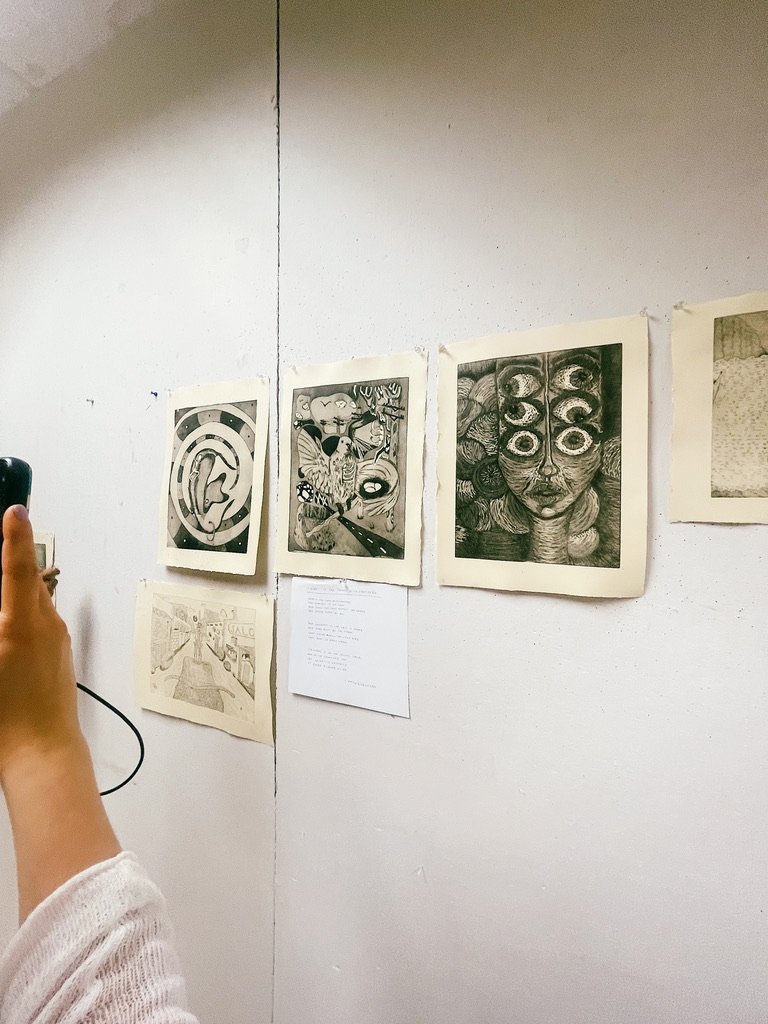LEFT HANDED MANIA






LEFT HANDED MANIA
Left Handed Mania is a 9x12 copper plate printed onto 11X15 paper. This is my first project using intaglio and intaglio techniques, such as Aquatint! This project had so many learning curves along with its unique challenges. I started this piece with the idea of mania and what it could make a person feel like. I wanted to express how crazed and almost compact the human mind can be. This being said, the "unique challenges" I had with this project worked out in my favor and made this piece better and more meaningful to me than I had imagined walking into it.
I cracked my right shoulder at the beginning of this project, making me unable to use my dominant hand. I was very nervous about continuing this project, but my professor encouraged me to use my left hand as much as possible. Unfortunately, this made the task difficult for me. Drawing with my left hand was something I had never done before, and I could not achieve the cleanliness I originally wanted for this piece. I finally put the idea of keeping the background clean and calculated to bed and embraced the uncertainty of working with my non-dominant hand. Allowing myself to lean into the messiness and chaos of the line work of my left hand gave this drawing precisely what it needed. It related to my original concept by providing the piece's emotion, movement, line weights and values, and almost a sense of distortion I wanted to convey.
Intaglio is the family of printing and printmaking techniques in which the image is incised into a surface, and the incised line or sunken area holds the ink. It is the direct opposite of a relief print where the parts of the matrix that make the image stand above the main surface. Etching is an intaglio printmaking process in which lines or areas are incised using acid into a metal plate to hold the ink. To prepare the plate for etching, it is first polished to remove all scratches and imperfections from the surface. Aquatint is an intaglio printmaking technique, an etching variant that produces tone areas rather than lines.
For this reason, it has been chiefly used in conjunction with etching to give both lines and shaded tones. In addition, Aquatint may be used to create tones of differing gradations through etching. Such tonal gradations may be added to a printing plate that has already been worked with engraved, etched, or drypoint lines.
